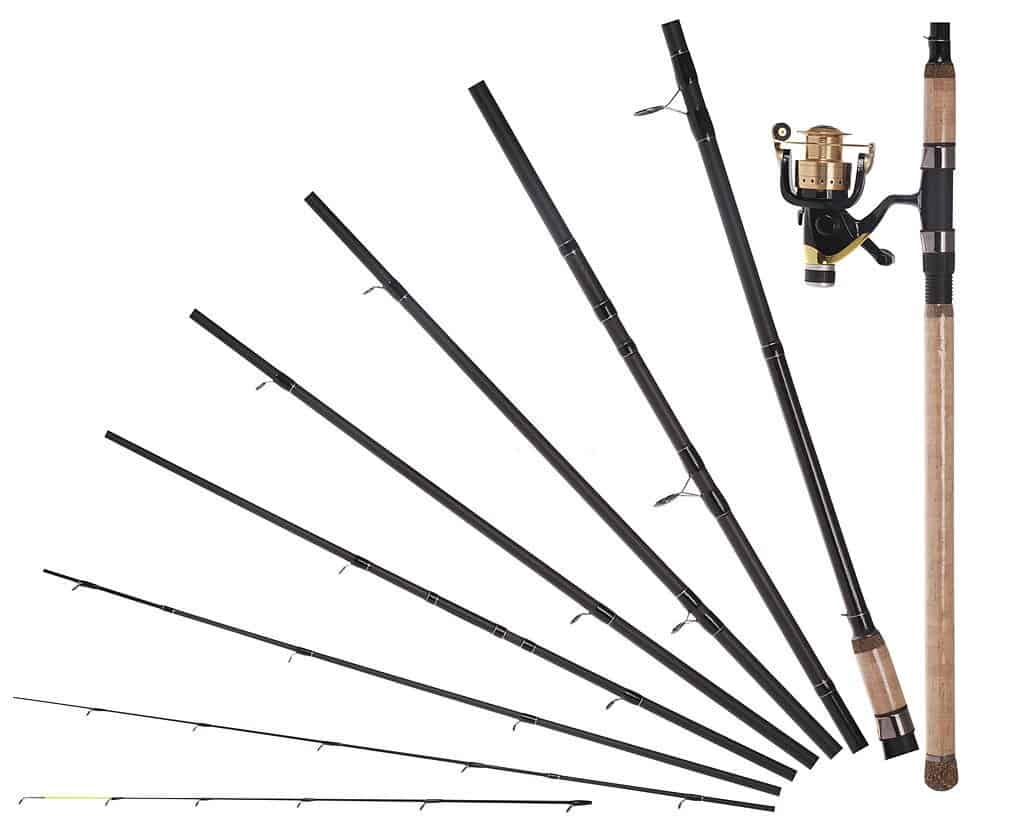Fishing rod functions refers consisting of some mandatory parts of a rod that are required to catch fish. These parts are directly related to catch fish. Having depth ideation about baitcasting fishing rod function can make fishing more convenient. So, what is the function of baitcaster rods is an optimal question to the angler. To help you out in this matter, this write-up will explain the functionality of each part of a baitcaster rod. So, let’s dive into this guide that will help to let you know the details of a baitcaster rod.
The Functionality of Baitcaster Rods
Handle
A handle is the main interface between an angler’s hand and the rod. It offers a good grip and comfort and distributes the rod weight every time an angler twitches, pushes and pulls the rod. Baitcasting rod handles can be made from composites, cork, EVA foam, or rubber. Different rod-handle materials provide minimum slippage and maximum resistance against stains and damages.
Reel seat
The reel seat is a component where the baitcasting reel seats and makes the reel attached to the rod. It contains the fishing line and helps cast the line into and retrieve it from the water. A metal or plastic piece up and down the real seat keeps the baitcaster rod and reel together. The latest baitcasting rods have reel seats with a portion of the exposed rod blank. This exposed blank enables anglers to place a finger on it to detect the most delicate bite.
Hook keeper
The hook keeper is a metal ring attached to the baitcasting rod body located where the rod handle ends. It is also known as the Keeper Ring. As the name suggests, hook keepers allow anglers to hold their fishing line or lure when not fishing, eventually making rod transportation easy.
Blank
The blank or fishing rod blank indicates the long, flexible rod body without any part attached. Choosing blank rods for bait casters mostly depends on the fish preference and fishing style of anglers. Baitcaster rod blanks can be made from graphite, fiberglass, or composites. Each material comes with pros and cons and impacts the casting and overall power.
Guides
Guides are cylindrical and keep the fishing line smooth and safe. They run the rod length, keeping the line close to the baitcasting reel and rod tip but not tangled. Consequently, the casting ability is enhanced. The stronger the guides are, the less chance the line will break. When sliding within the smooth surface of the ring-like guides, the line experiences less heat, wear, and tear. Compared to spinning rod guides, baitcaster guides are smaller and different in position. They face towards the sky instead of the ground. Lightweight guides transmit line vibrations to the rod better than heavyweight guides. Also, longer bait casters that bend more dramatically have more guides to reduce the line slap and distribute stress evenly along with the rod blank.
Tip Top
The tip-top is the last and smallest metal guide of a baitcaster located at the end of the rod tip. It helps the fishing line enter the water, enables anglers to reel a lure on the rod, and prevents tangles. Since the tip-top is easy to break and requires careful handling, transporting a baitcaster will be frustrating if this component faces any unexpected damage. When catching aggressive fish, the tip-top measures the rod action and allows both the rod and rod tip to curve as necessary.
FAQ
- Is a baitcaster better than a spinning reel?
Compared to spinning reels, bait casters can handle heavier lines, allow longer casts, and provide better line control with the wider spools. Also, they make the lure fall softly into the water so that nearby fish don’t get alarmed or scared. However, for beginners, bait casters are difficult to buy and master.
- What is the best line for bait casters? And why?
For bait casters, braided line is considered the best due to its non-stretchy material, quick pull-outs, and longer casts. It consists of several single strands of high molecular weight polyethylene, which offer great strength and line capacity. Braid also allows packing more fishing lines onto smaller reels.
- How far can you cast with a baitcaster?
With a baitcaster, you can cast the farthest. Baitcasters provide larger line capacity and greater accuracy and control when targeting distant areas. Longer poles mean farther casting. In general, a 7 feet baitcaster can catch around 55-60 yards (50-54 meters) on open flats, whereas a 12 feet rod is for going over 100 yards.
Summing up
In this baitcaster for beginners write-up, you have learned – The definition of a bait casters. Parts of a baitcaster rod and how they function. The casting details of bait casters.
Casting with a baitcaster rod requires a little patience and practice. Now that you know how bait casters function, play a few practice castings and discover more details about this rod type on your own. Also, search for simple tips if necessary. Once you become adept with bait casters, you will experience non-stop high-end fishing.

Tony is a professional fishing instructor, and his hobby is fishing! He has been fishing for the last four years, and he loves the fishing instructor profession. Based on his experiences with different types of fishing, he shares his opinion about various fishing techniques so that a beginner can get started right away. Find him on Twitter. Happy reading!

